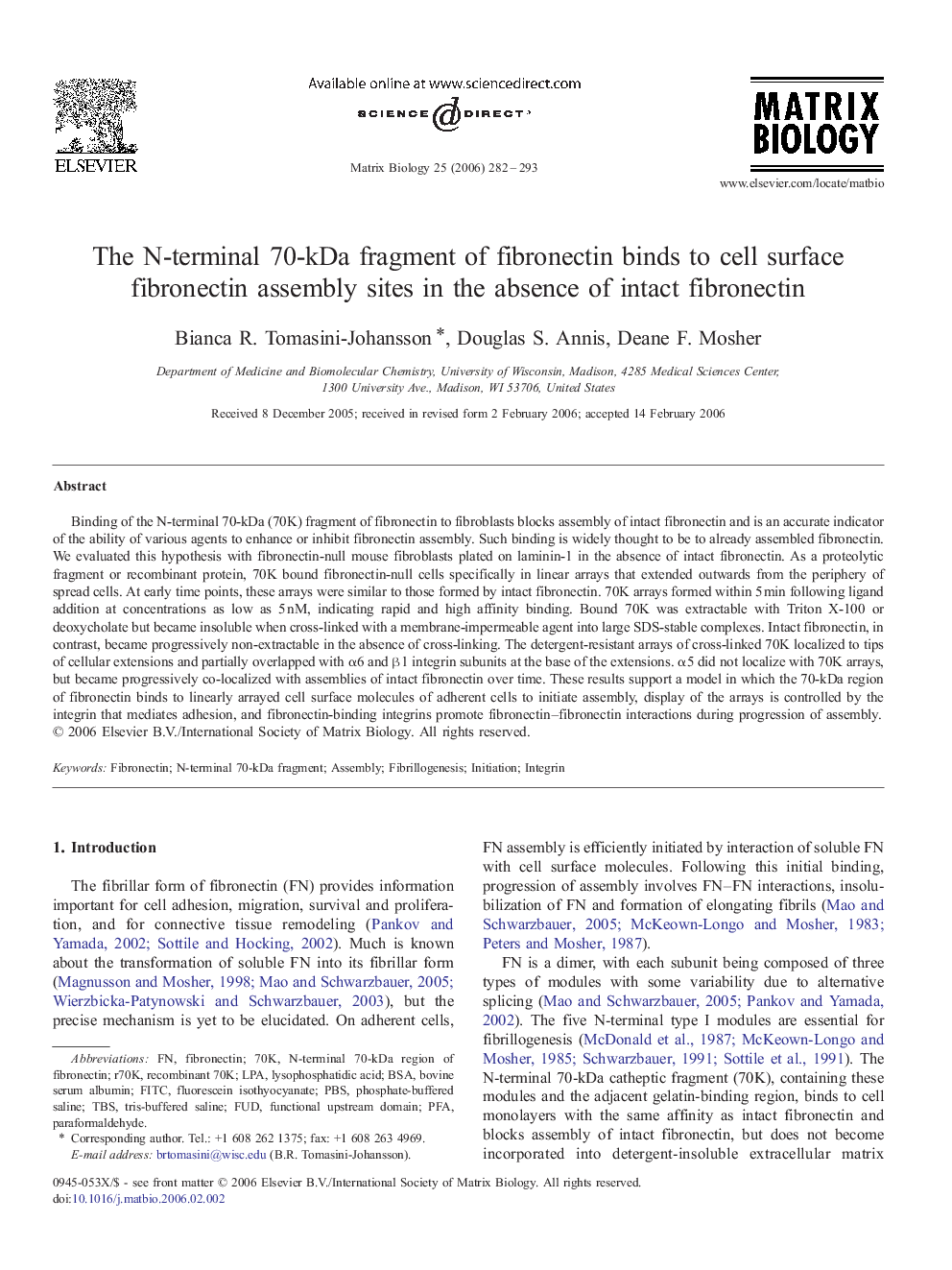| Article ID | Journal | Published Year | Pages | File Type |
|---|---|---|---|---|
| 2145447 | Matrix Biology | 2006 | 12 Pages |
Binding of the N-terminal 70-kDa (70K) fragment of fibronectin to fibroblasts blocks assembly of intact fibronectin and is an accurate indicator of the ability of various agents to enhance or inhibit fibronectin assembly. Such binding is widely thought to be to already assembled fibronectin. We evaluated this hypothesis with fibronectin-null mouse fibroblasts plated on laminin-1 in the absence of intact fibronectin. As a proteolytic fragment or recombinant protein, 70K bound fibronectin-null cells specifically in linear arrays that extended outwards from the periphery of spread cells. At early time points, these arrays were similar to those formed by intact fibronectin. 70K arrays formed within 5 min following ligand addition at concentrations as low as 5 nM, indicating rapid and high affinity binding. Bound 70K was extractable with Triton X-100 or deoxycholate but became insoluble when cross-linked with a membrane-impermeable agent into large SDS-stable complexes. Intact fibronectin, in contrast, became progressively non-extractable in the absence of cross-linking. The detergent-resistant arrays of cross-linked 70K localized to tips of cellular extensions and partially overlapped with α6 and β1 integrin subunits at the base of the extensions. α5 did not localize with 70K arrays, but became progressively co-localized with assemblies of intact fibronectin over time. These results support a model in which the 70-kDa region of fibronectin binds to linearly arrayed cell surface molecules of adherent cells to initiate assembly, display of the arrays is controlled by the integrin that mediates adhesion, and fibronectin-binding integrins promote fibronectin–fibronectin interactions during progression of assembly.
